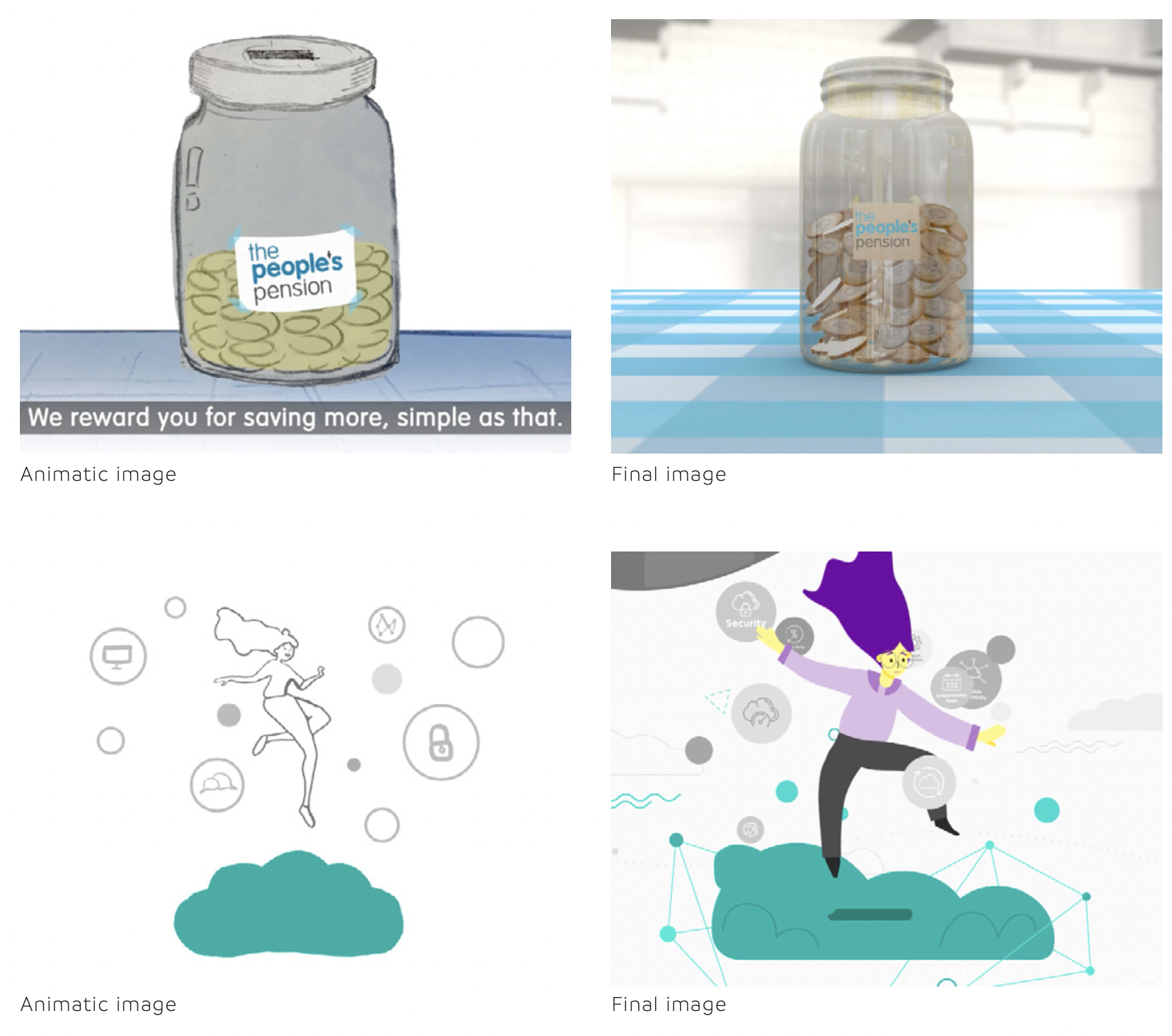The Animation Process: Animatic
We often record a temporary voiceover and then edit the storyboards in time with that voiceover. This gives us a sense of how the timing of the visuals will work. The result is called an animatic.
Animatics are really useful for us because they help us to picture how the final animation will work. We will change the timing on each frame depending on how long we expect the shot to last in the final film. Timings changes are used to create a sense of pace.
The pacing is a critical aspect of your animated video, as keeping your audience engaged until the end stands or falls with the timing of the action and the story. Explainer videos, in particular, need to keep impetus so that the viewer is delivered the key benefits and features of that product or service in a direct way that doesn’t waste their time.
We don’t always share animatics with clients because it can cause alarm and concern to people who are not used to looking at work in progress animations. It’s usually a staff member who records the temporary voiceover into a mobile phone so the recording is really rough and we don’t want clients to think that is how their animation will sound or look.
With 3D animation where it’s time consuming to model characters and locations in 3D we may create an animatic using stick figures to help us see how the story plays out. We can tweak the narrative in this phase and make suggestions for improvement.
Sometimes we will add a soundtrack to help give the best sense of how the animation works.
if we do share an animatic with you, please bear in mind, we take a lot of pride in our work and would never deliver a poorly recorded voiceover or roughly drawn stick people as a final piece of work.

